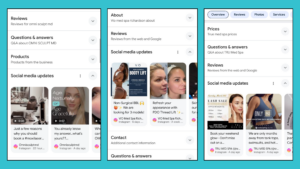
How many times have you worked on a campaign that didn’t work? Do you remember the reason?
Marketing is a process of experimentation, and experiments don’t always work. But there are a few common reasons that I see marketing campaigns fail when they don’t need to.
Not Enough Budget
Let’s be honest — marketing budgets are often arbitrary. Rather than basing marketing budgets off of a percentage of revenue, many marketers base campaign budgets either on what’s available or the budget they subjectively feel comfortable with. But is it enough to see results?
Budgets that are too small are problematic for the following reasons:
• Your campaign doesn’t have enough spend to run for a long enough period of time.
•Your spend is too low to build up adequate “frequency.”
• Your campaign can’t generate enough traffic and leads to see a sale.
This last one is particularly important. You must spend enough to actually see a meaningful impact. The real strategy is to balance the objectives of your campaign with the budgets you have. If your spend is small, don’t try to take on an objective that requires larger, long-term spending, like building a brand.
Misguided Objectives
One common problem I often see with marketing campaigns is either a lack of a measurable objective or having too many objectives for a single marketing campaign. If you have a handful of objectives and only meet one of them, is that a success or a failure?
The best marketing campaigns are built against a single, measurable objective. This provides the most focus for the strategy you put together and makes it more likely that you’ll achieve that goal and the campaign will be judged a success. For example, if your primary goal is to get qualified leads, don’t get distracted by other metrics like traffic as a way to judge success. Rather, make sure you have the tracking in place to measure the quantity and quality of leads your campaign is generating. In this example, it would be making sure you have your goal tracking set up in your website analytics to track the number of leads submitted and a feedback loop with your sales team to determine the quality of those leads.
Unclear Positioning
A lack of clear positioning is a recipe for failure. Without clear positioning about what you offer, how it’s valuable to the customer and how you’re different from the competition, every marketing dollar you spend will be less efficient.
Potential customers are less likely to click on your ads and more likely to leave your website if they can’t clearly understand how what you offer is relevant to them.
Weak, Unclear Calls To Action
This is a common problem across marketing campaigns. Your call to action is an invitation for a potential customer. A weak call to action leaves them unsure of what to do next. An unclear call to action leaves your prospect unwilling to move forward because they don’t understand what to expect. Too many calls to action and they don’t know which path to take.
Establish a single, primary call to action that’s clear, and you’ll likely see an immediate improvement in your marketing.
Customer Experience Barriers
Sometimes, factors outside of marketing are responsible for failure. Customer experience is a great example. If you have an online checkout experience that’s difficult, or if your sales team doesn’t respond fast enough to leads, these can all be reasons that a marketing campaign doesn’t see the return you expect.
Make sure that you fix any issues in your customer experience before increasing marketing spend. Marketing is not the solution to overcoming these challenges.
It Doesn’t Stand Out
Human attention is a scarce commodity. The first job of all marketing on digital channels is to grab attention. No one can understand the value you offer if they never see your marketing messages. Yet when we look at many industries, there’s a sea of sameness in their messaging and creative.
Make sure you’re leveraging the best practices of the marketing platforms you’re using to make your marketing more visible. This includes using strategies like video on social platforms that are more noticeable than static images alone.
Look at the competitive landscape and take note of all the category “standards,” such as colors and messaging. Then figure out which standards to break so your marketing stands out.
Relying On A Single Channel
You can’t put all your eggs in a single basket. Each marketing channel has its own strengths and weaknesses. What you’re doing as a marketer is building a marketing “ecosystem” where each channel supports different objectives — all toward common business objectives. What’s more, when you focus only on a single channel, you’re making a bet on a single channel working rather than diversifying your channels to see what works best.
The right approach is to coordinate multiple channels. Here’s an example: You run YouTube ads to drive awareness of your brand and traffic to your site. Your Facebook remarketing campaign targets those who’ve visited the site to try and convert them into customers.
Unrealistic Expectations
Perhaps the biggest reason that marketing campaigns fail is unrealistic expectations. When you expect a great return on investment from your marketing and you don’t spot one of the weaknesses above, your expectations aren’t met.
While there’s not a single recipe for success in marketing, understanding some of the most common reasons marketing campaigns fail will help you spot these red flags so you can get your efforts on the right track for success.
Previously published on Forbes.com.




